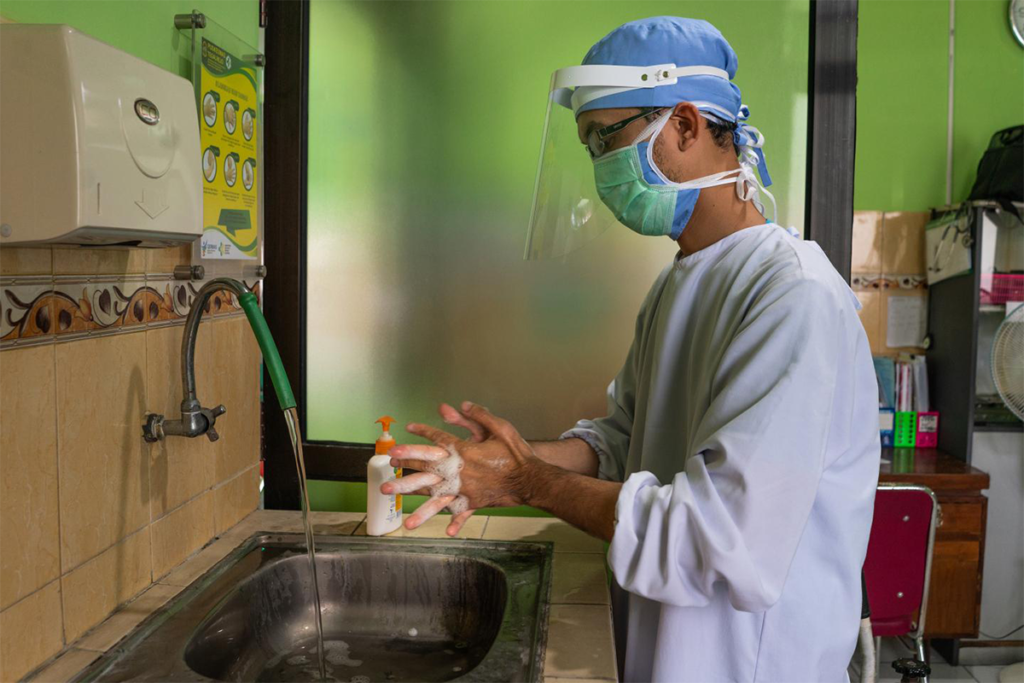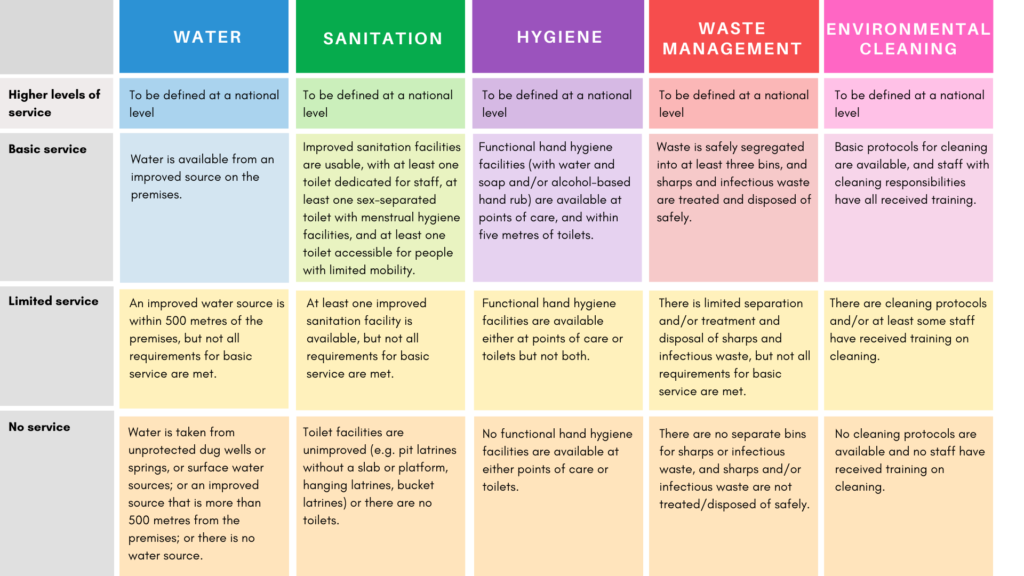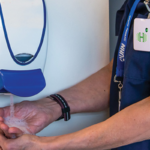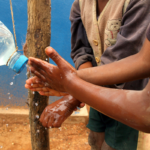By: Aarin Palomares and Lily McCann
Approximately 1.8 billion people are at an increased risk of COVID-19 and other diseases because they use or work in health care facilities that lack basic water, sanitation and hygiene (WASH) services. WASH is fundamental to safe and quality care. Without it, other interventions to improve quality of care have limited impact. Despite some progress, this unprecedented time highlights the vulnerabilities within health systems. Furthermore, the full extent of WASH service availability remains largely hidden because major gaps in data persist.
The WHO/UNICEF Joint Monitoring Program (JMP) maintains an extensive global database and serves as the leading source of comparable estimates for WASH progress at the national, regional and global levels. The recently published JMP progress report entitled “Fundamentals first: Universal water, sanitation and hygiene services in health care facilities for safe, quality care” updates key metrics for WASH in health care facilities. In this post, we discuss the JMP’s research methods and highlight key updates.
How does the JMP monitor WASH progress?
The JMP uses standard classification and estimation methods to compare WASH progress across countries and regions. The JMP estimations begin with identifying nationally representative data sources that contain information on the use of WASH services in various contexts, including homes, schools and health care settings. In many cases, this information is collected through interviews conducted by a country’s national statistics bureau. The JMP uses a simple linear regression to estimate the population using different levels of service based on the program ‘service ladders’ (see figure below). These service ladders serve as a benchmark and compare progress across countries; they are designed to track progress towards a basic level of service, which is the indicator used for global monitoring.
The JMP includes a set of core questions to harmonize data collection between and within countries. Questions and indicators include data on water quality, availability of drinking water and handwashing facilities as well as information on facility type and use. In total, the JMP produces estimates for 26 indicators related to WASH.
The latest progress report includes updates to the total number of countries with available data, increasing from 125 to 165 countries, as well as an increase in total number of health care facilities surveyed from 560,000 to 794,000. This increase in data coverage increases the number of countries and regions with estimates for basic WASH services in health care facilities.
What are the latest estimates for WASH in health care facilities?
This report also describes the global response for addressing WASH in health care facilities. In response to the 2019 World Health Assembly resolution on WASH in health care facilities, data from 47 early adopter countries indicate that 75% have conducted situation analyses and nearly 100% have drafted or are updating their WASH standards. Additionally, over half of reported countries have done health workforce training combined with infrastructural improvements. These actions are on track to meet global targets. However, only 11% of early adopter countries indicate WASH in health care facility targets in national strategies and only 11% include WASH indicators in health systems monitoring. These indicators reveal that many countries are considerably off track to meet global targets for these elements. Overall, countries are taking steps to improve WASH in health care facilities, but progress is varying and insufficient.
What does this mean?
- Implement costed national roadmaps with appropriate financing. Costed national roadmaps on WASH in health care facilities provide a plan for action and a mechanism for coordination. These roadmaps should serve as the basis in which partners, donors and government agencies engage, track progress and target resources.
- Monitor and regularly review progress in improving WASH services, practices and the enabling environment. While the JMP’s global database is substantial, gaps remain. Global WASH indicators should be incorporated into facility surveys and health monitoring. Likewise, it is important to collect and analyze data regularly and use these data to prioritize action and drive improvements.
- Develop capacities of the health workforce to sustain WASH services and promote and practice good hygiene. Sustaining WASH services requires dedicated and trained staff. Furthermore, all health care facility staff members should be supported to practice good hand hygiene to prevent infection.
- Integrate WASH into regular health sector planning, monitoring and programming. COVID-19 exposes the stark inequities across a range of sectors, including health and WASH. Investing in healthier environments for health protection and ensuring health systems are resilient against future disease outbreaks can offer some of the best returns for society.
Overall, efforts should focus on driving greater attention and resources toward WASH in health care facilities. While this report showcases the need for investment, another key ingredient for quality health care is consistent leadership from governments, policymakers, health system leaders and civil society. Implementing these recommendations requires dedicated leadership to strengthen their commitments and related investments toward WASH and health. If we are to achieve the aim of delivering safe and quality health services for all, we can no longer afford to overlook the fundamentals.
Photo credit: UNICEF Indonesia




